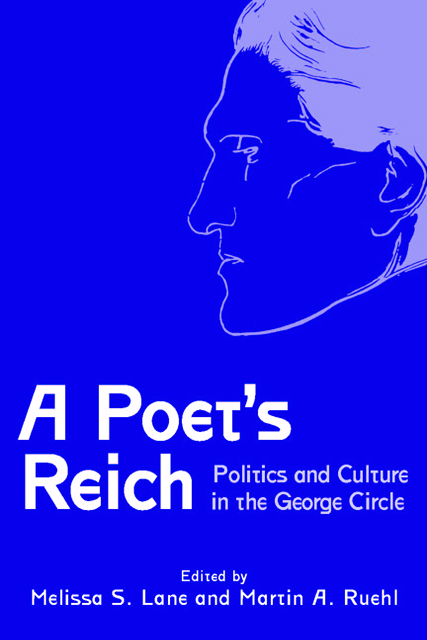1 - The George Circle: From Künstlergesellschaft to Lebensgemeinschaft
Published online by Cambridge University Press: 10 February 2023
Summary
In November 1903, an announcement on the front page of the Verzeichnis der Erscheinungen der Blätter für die Kunst, printed in bicolor on beige laid paper, introduced readers to a “Gesellschaft der Blätter für die Kunst.” In fact, this “Gesellschaft” had already been in existence for almost twelve years. It was introduced here retrospectively, in order to correct a certain image it had recently acquired in the public eye. The “Gesellschaft der Blätter für die Kunst,” the authors of the announcement stressed, was a loose association “künstlerischer und ästhetischer menschen” rather than a secret society (“geheime[r] bund”), as the public seemed to believe. It was not held together by statutes or laws; its “Mitglieder,” as they were termed elsewhere, had been nominated or had joined by natural affiliation. They were all firmly opposed to the Naturalist movement in German literature and saw themselves as the spearhead of a cultural-intellectual counter-revolution aimed at a new form of art and spirituality (Geistigkeit).
The announcement of the Gesellschaft in the Blätter für die Kunst of 1903, as will be argued below, is a document that captures a crucial moment of transition in the history of the George Circle. What began as a mere union (Zusammenschluss) of artists with limited goals turned into a tightly knit circle, a movement (Bewegung) that soon developed into an esoteric “Kult- und Lebensgemeinschaft,” and, finally, a “staat.” The label George-Kreis denotes all of those formations. The goal of my essay is to trace the Circle’s changing forms and functions, the shifting constellations and affiliations of its coterie of friends, and to locate these transformations within the context of fin-de-siècle German culture — in particular, the Lebensreform movement. In order to document these changes and to elucidate their signifance, I shall be looking mainly at the “Einleitungen” and the so-called “Merksprüche” from the Blätter für die Kunst, alongside several of Stefan George’s poems.
Although the announcement in the 1903 edition of the Verzeichnis listed Stefan George, Hugo von Hofmannsthal, Ludwig von Hofmann, Reinhold Lepsius and Melchior Lechter as coequal members, George was the undisputed originator and leader of the group that was beginning to form. Born in 1868 in Büdesheim, near Bingen, George was the eldest son of a Catholic, middle-class rural family, which had descended from both sides of the river Rhine.
- Type
- Chapter
- Information
- A Poet's ReichPolitics and Culture in the George Circle, pp. 25 - 36Publisher: Boydell & BrewerPrint publication year: 2011
- 2
- Cited by

